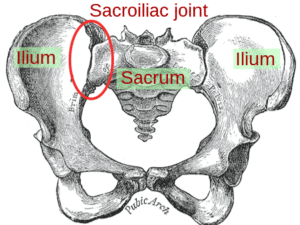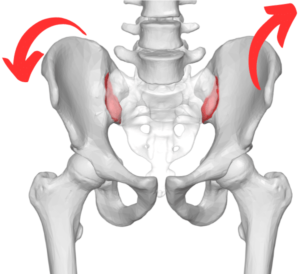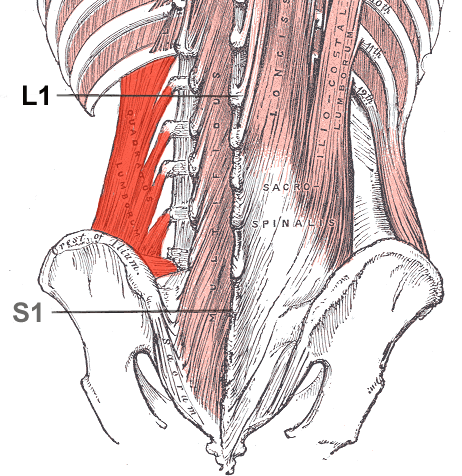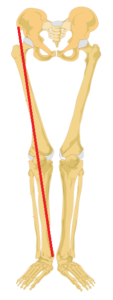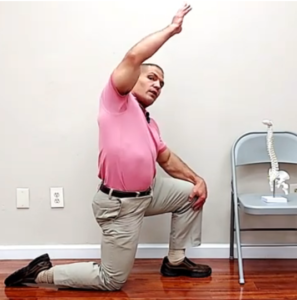If you've ever been to a chiropractor for back pain, you may have heard them say that one leg is longer than the other. Then when they adjust your spine, magically, it goes back to normal. But you may wonder, why did one leg get longer than the other in the first place?
Watch the video to learn why you may have one leg that's longer than the other, how to fix a leg length discrepancy in order to help relieve your back and/or buttock pain.

2 Types Of Leg Length Discrepancies
There are a couple of different types of leg length discrepancies:
- Structural leg length discrepancy
- Functional leg length discrepancy
Structural leg length discrepancy
A structural leg length discrepancy means that one leg is actually longer than the other.
That can be because your bones grew to a different length as you were developing. Or, it can be due to really severe arthritis in one hip joint or one knee joint. In the later case, you can potentially lose a little bit of space.
So either one leg grew longer than the other to begin with, or one leg shrunk a little bit over time.
Functional leg length discrepancy
The other type of classification is a functional leg length discrepancy.
In this case, your legs are actually the same length, but they appear different.
If you go to a chiropractor or a physical therapist and they do a manipulation on your spine or SI joint, it will seem as if the legs magically become the same length again.
In reality though, they were always the same length. One leg just appeared longer than the other due to either a malalignment in the pelvis or a malalignment in the spine.
There are a few different ways that can happen.
Leg Length Discrepancy from an SI Joint Dysfunction
One way is an SI joint dysfunction or sacroiliac joint dysfunction.
The sacroiliac joint is in the back of your pelvis where your Ilia join with your sacrum, the lowest part of your spine.
These joints have very small amounts of movement, about one to three degrees of rotation.
If one joint gets rotated either forwards or backwards - let's say forwards in this case -it'll bring the hip joint closer to the floor, making that leg appear longer on the other.
Leg Length Discrepancy from a Lower Back Problem
Another way to have a leg length discrepancy would be from an imbalance in your lower back.
For example, if your quadratus lumborum muscle on one side of your spine goes into a spasm, it can pull one side of the pelvis up.
Therefore, that leg will appear longer, even though it's not actually longer.
If you have a leg length discrepancy, you need to find out whether it's a structural problem or a functional problem.
How to Tell If One Leg Is Actually Longer
The way to tell if one leg is actually longer than the other is pretty simple, but it's often overlooked.
Many chiropractors, physical therapist, and medical doctors fail to do this simple test and end up inadvertently treating the wrong type of leg length discrepancy.
Here's how to tell if one leg is actually longer than the other:
You take a tape measure and measure from the bump on the front of the hip (ASIS) down to the bump on the inside of your ankle (medial malleolus).
Measure both legs and then determine if one is longer than the other.
Differences of less than 1/2 inch usually are negligible and don't cause major issues. Differences greater than 1/2 inch should be accommodated for.
Accommodating For A Structural Leg Length Discrepancy
For smaller leg length discrepancies up to about 1/2 inch, you can buy a heel lift to go into your shoe. The lift goes on the side of the short leg.
Warwick Enterprises Adjust A Heel Lift, ...
$15.65 ($7.82 / Count) (as of July 26, 2024 00:10 GMT -05:00 - More infoProduct prices and availability are accurate as of the date/time indicated and are subject to change. Any price and availability information displayed on [relevant Amazon Site(s), as applicable] at the time of purchase will apply to the purchase of this product.)The standard size for these is 3/8" with three 1/8" layers so that you can adjust how much thickness you need.
If you start getting too much past 1/2 inch inside your shoe, your heel can start to come out of your shoe. With high-top shoes or boots you may be able to get upto 1 inch in the shoe.
Past that, you may need to see an orthotist to get the shoe for your short leg built up under the sole.
Another option is taking the shoe liner out of the shoe on the longer side. This will make that leg functionally 1/8 to 1/4 inch shorter.
Correcting A Functional Leg Length Discrepancy
With a functional leg length discrepancy where your leg bones are the same length. However, you're holding your body in an abnormal position, which makes one leg appear longer than the other.
Therefore, you need to correct the muscle imbalance that's causing that.
If it's due to an SI joint problem, an easy self-correction is to stretch your hip flexors.
If it's related to a stiff quadratus lumborum muscle, then you want to do a quadratus lumborum stretch.
However, you can stretch both of them at the same time with this stretch:
- Kneel on the knee of the leg that appears long with the other leg out in front of you as if in a lunge position.
- Roll your pelvis underneath of you to flatten your lower back.
- Push your pelvis forward to stretch your hip flexors. You should feel a stretch in the front of the hip and thigh that you're kneeling on.
- Next put the arm of the side that you're kneeling on up in the air.
- Reach up high and lean slightly toward the opposite side until your feel a gentle stretch in the side of your trunk.
- Hold 30 seconds to 1 minute.
This helps correct a functional leg length discrepancy when you do the stretch on the side of the longer leg.
When To Get Help For A Leg Length Discrepancy
If these stretches don't fully resolve the leg length discrepancy, or if you continue to have back pain or SI joint pain, see a physical therapist. In particular, see a physical therapist who understands functional and structural leg length discrepancies.
If you're in the St. Louis area, we'd be happy to help you at More 4 Life. Just tap the button below to request an appointment with one of our specialist physical therapists.
Like this post? You may enjoy these posts as well:
Scoliosis Exercises To Straighten Your Spine
Kyphosis with Lordosis Curve of the Spine: Causes and Treatment



